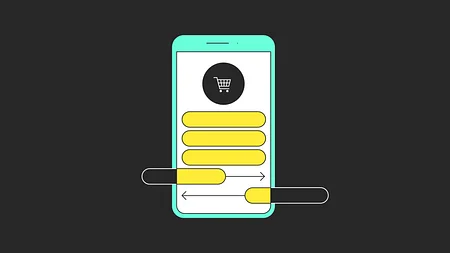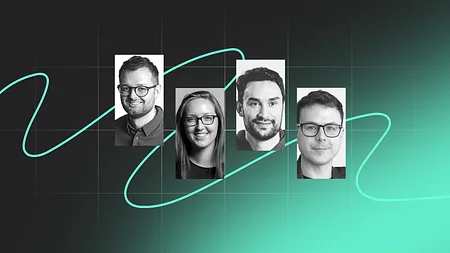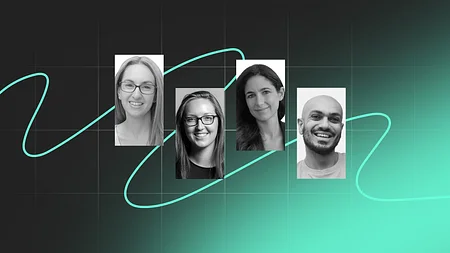Flux Founders on Digital receipting and Fintech partnerships
David M. Brear interviewed Matty Cusden-Ross and Veronique Barbosa, two of the three founders of digital receipting start up, Flux, for Fintech Insider, all about their new proposition, and Megan Cawood on Starling’s Marketplace and their partnership with Flux.
Tell us a little bit more about Flux.
[Matty]: It really came about after a realisation that we had, and that realisation is that it’s absolutely insane that today you can go from using 21st century technology of contactless payments, to then go to 100 BC technology of paper receipts and loyalty cards. For us, that made absolutely no sense at all. The information that’s stored on receipts is really valuable. It’s the history of your purchases, at the most granular level possible, and that data is something that creates value for everybody. It’s great for consumers, because it means you get much better insights into your spending, it means you can also get much better personalisation. Better personalisation is great for retailers, because it means you can increase your sales, and increased sales with retailers is great for banks, because it means increased card usage. So, for us, it’s data that will become ubiquitous. The only question is how, and fundamentally, the only way this can happen is to be absolutely seamless for the customer. We automatically link that data to payment cards, so you can just walk into a shop, pay with your bank card, and we’re able to know which card it is, and attribute that information, and store it in the same safe place that transactions live today, which is your bank statement.
The information that’s stored on receipts is really valuable. It’s the history of your purchases, at the most granular level possible, and that data is something that creates value for everybody.
[But] it's more than the receipt, it’s much more about what’s stored on the receipt. It is the most granular level of insight into things that you’ve purchased.
What we’re really doing at Flux is building the infrastructure that allows item-level information to become ubiquitous, and we’re building the platform that enables that, and one of the things that we can do is empower consumers to have much more informed decisions about their finances, and we’re incredibly proud to be working with Starling as their first fully integrated partner in their banking Marketplace. An extension of that is going to be looking at how we can do things like automated expensing for business purchases, or even using that data to do things like calorie tracking, because we can see what food you’ve purchased, and therefore that can be fed into your health app. We really want to build the platform that enables this data to become ubiquitous, because we see that it’s something that is valuable and good, and then what will happen with that? I think we’re seeing the tip of the iceberg, with what we can actually do with it.
You’re one of the first companies that I’m really seeing building on top of APIs, building on top of the new platforms that the challenger banks are bringing through. Is that fair to say?
[Matty]: Yes, that’s absolutely correct. I think one of the keys that we’ve seen is that the only way that we can really see that this data will become fully accessible and ubiquitous is [that] it’s completely available to everybody. The only way that we can really see that happening is that it’s a fully seamless experience for the consumer. Which is why we integrate with banks, because it means that, for the customer, they don’t have any extra steps. There’s no entering email addresses, or scanning QR codes, or taking photos. It’s just part of the payment process, except you just get the additional benefits and value, and yes, it’s been a pleasure to work with challenger banks, especially Starling, because it means that we’ve been able to do something today that, even a year ago would have been really hard to do. Working with tier one banks is incredible, because they provide so much, value, but it takes more time.
We integrate with banks, because it means that, for the customer, they don’t have any extra steps.
This is almost a forerunner for some of the things we’re seeing, with PSD2, and all the changes that are coming through. We’re going to have thousands of companies who want to be integrating through APIs. So, how easy has it been to work with these guys?
[Veronique]: A key thing that we’re very grateful for, is we were one of 600 startups chosen to be part of the Barclays Tech Stars Accelerator this year, so we actually went through that program from January to May of this year. That has given us an incredible, strong relationship with the Barclays team. I think, in terms of what we’re doing, and why it works, it’s a lot around timing, and you absolutely hit the nail on the head. It’s around the fact that, with PSD2 around the corner, you have banks starting to open up these APIs, these transaction APIs. They’re either ready, and launched, like Starling, or they’re supposed to be ready by early next year. That’s a complete change in approach to partnership, to integration, to openness. On the flip side of our business, we’re seeing that point of sale companies that work with some of our retail partners, like Eat, are very open. They have APIs that are sophisticated, accessible, as long as you have the retailer’s permission, of course. The API economy is what has made Flux possible now, and that’s why we think the timing’s right.The API economy is what has made Flux possible now, and that’s why we think the timing’s right.We’re not asking customers to download another app, because we realised very early on, that’s just not going to fly, unless you have huge volume of retailers on the other side. The logical place to put the receipt is in the banking statement. By partnering with banks like Starling, it just makes the customer experience absolutely seamless, and so far, the feedback has been very, very positive. Eventually, the next step in our partnership is to add in another feature on the Flux platform, which is automated loyalty points. So, because we see exactly what you buy, if Eat’s running a certain loyalty scheme for soups or toasties, we can just automatically credit those points, and then redeem it through cashback, because we’re in the banking app.
Megan Caywood, it would be good to get your reaction, as well. Why is this integration really important from Starling’s perspective?
[Megan]: There’s a few reasons for it. When you look at Flux, they’re very aligned with us, from a strategic perspective, from a brand perspective, really wanting to solve the same goals around helping customers have better insights into their financial lives, and using data to do so. And giving customers that ownership of the data. Similarly, when you look at open banking, we’ve really been wanting to be out ahead of it. So, when we launched our developer platform earlier this year, it was really to get the developer community to start engaging, start using these APIs and building cool integrations on top of them. So, with Flux, it very much fit for us, given that they’re ready to consume these APIs, and also provide value back to Starling customers in the Marketplace. In the Marketplace, it’s a really nice first integration, because we wanted to launch early with our first partner, and starting to get that customer feedback around the marketplace, and what people think, and what people want, and with Flux it’s nice because it’s frictionless. So, you go into the Marketplace, you turn on Flux, and it’s just there, it just works. So, it fit from technology, brand, and utility for our customers.
When you look at Flux, they’re very aligned with us, really wanting to solve the same goals around helping customers have better insights into their financial lives, and using data to do so.
You guys have gone really beyond what 99% of big banks out there would actually be able to do, in terms of integrating it into a transactional experience. So, is this another advantage of the challenger banks?
[Megan]:Yes, definitely. When we look across the landscape of fintechs, we’re just very aligned from a technology perspective, meaning that we can move at speed, to enable them to offer these types of services to customers. We want to help fintechs to, draw awareness around their product, to start getting to market faster, to really enable this type of competition innovation, particularly around open APIs, and letting customers share their banking data to do so. So, since we can do that quite quickly, because we’ve already built out our APIs, it’s easy for us, to consume their APIs and manifest that in the banking app, too, because we’re built from the ground up to do this exact thing.
Is this the first of many integrations that we’re going to start seeing coming through with the Marketplace that you’ve been setting up?
[Megan]: Definitely. So, over the coming weeks and months, what you’ll see is more and more partners rolling out for each category. And to begin with, it will very much be an app store like experience, where you can search and find and integrate with those that you choose. In the future, what we’ll do is look to enable more scale, letting as many fintechs that are compliant and have an API to integrate into the marketplace to be there, and then increasingly, using customer data to be more intelligent about it, to help make recommendations for which products they might want or use, based off of their spending habits, or indicated needs or desires, or whatever it may be. To make it increasingly intelligent for users. But yes, as of now, you’ll start seeing more and more partners in that marketplace.
Matty, Veronique, what’s next for Flux, then?
[Matty]: Where we want to get to, is we want to have further reach on the consumers, so looking at challengers, but also at the big banks, and then really expanding the proposition for consumers on the retailer side. We’re looking to go after high frequency retailers, because we want to cover the majority of your wallet share. We want to be able to provide customers with massive value, and that comes from understanding as much about their spending as we can. And so it’s really going to be pushing hard to expand on both those fronts that’s going to be keeping us pretty busy over the next 12 months.
[Veronique]: We have really exciting retail partners to announce over the next two months. Some household names on the high street that we’re very, very excited about. So, I would stay tuned.We want to be able to provide customers with massive value, and that comes from understanding as much about their spending as we can.To listen to the interview in full, download the latest episode of Fintech Insider, or stream it here. For more information on Flux, visit tryflux.com For more interviews like this, subscribe to Fintech Insider.




